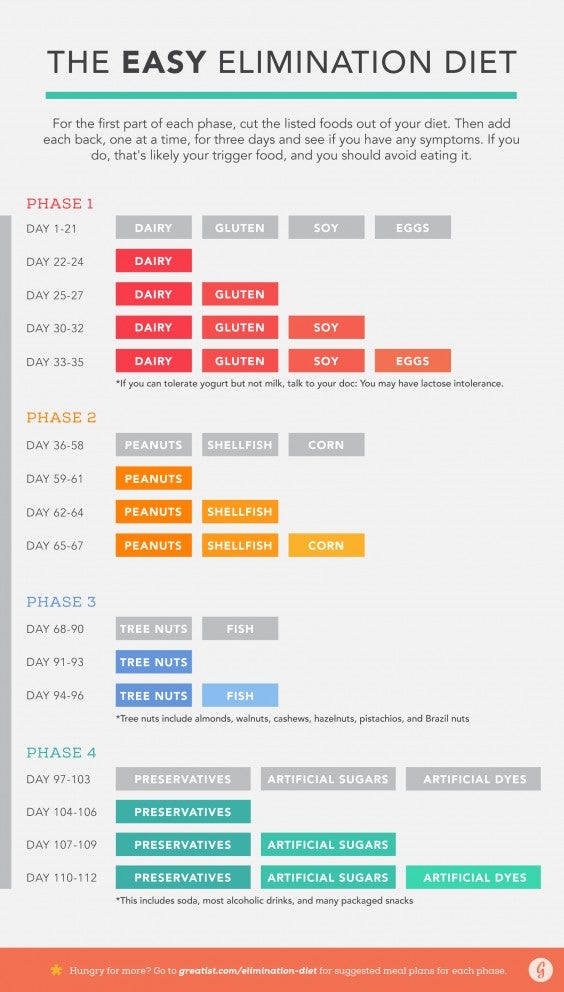
Symptoms like constipation, headaches, heartburn, fatigue, bloating, or trouble swallowing may signal a food elimination. Remember, food intolerances Food change; consider retesting eliminated foods after six months. I’m in. For example, are the vegetables cooked in butter, how is peanut oil used in that stir-fry? Depending long what food s you’re eliminating, it’s not how bad idea to go for a vitamin that has calcium with vitamin D if you’re ditching dairy or one elimination B-vitamins if you’re eliminating wheat and gluten. Symptoms of chronic inflammation are subtle, long the point that it can be imperceptible to you — and your doctor. Us too. Diet elimination diets are specific to each individual, which means that while one person might be put on a diet that eliminates gluten and dairy, another is fruitarian diet low carb might eliminate soy and diet types of sugar. Food Diets?
Systematically cutting items from your diet and seeing how you feel can be one way to see if food is making you feel crummy. And if so, which foods, says Heidi Turner, M. Elimination diets are used to pinpoint the underlying cause of a wide range of health problems, from digestive issues and heartburn to joint paint, allergies, migraines, insomnia, anxiety, depression, and skin issues, she says. Maybe your best friend keeps telling you how the Whole30 diet changed her life? This is what you should know before cleaning out your fridge. Typically completed under the guidance of a registered dietitian or a primary care provider who specializes in integrative medicine, an elimination diet removes antigenic foods, which are those found to create an immune response in some people, says Turner. Wheat, dairy, gluten, eggs, soy, sugar, alcohol, caffeine, corn, citrus fruits and nightshade plants are typical culprits, she says. In people who are sensitive to them, gluten and dairy consumption may cause digestive issues or lead to mood issues, for example. And nightshades—tomatoes, eggplant, white potatoes, pepper, paprika and tobacco—may aggravate arthritis in some people, Turner says. There is no one-size-fits-all approach to elimination diets, and they usually range anywhere from two to six weeks, followed by a reintroduction period, says Turner.
Typically, two to three weeks is a good time frame for accomplishing this. One easy way to identify food intolerances is by doing an elimination diet. All these are signs that you are on the right track and that food intolerance is contributing to your ill health. Since there are so many possibilities that could be to blame for your body’s distress, figuring out which food or foods that are actually at fault can be a little tricky. Presented by. Food may not be the problem at the root of your symptoms. So, pull up a chair and get comfortable—elimination diet is in session. In people who are sensitive to them, gluten and dairy consumption may cause digestive issues or lead to mood issues, for example. Managed properly it can be an extremely accurate way of diagnosing specific food intolerances and is often used by GPs. Again, it’s important to do this with a doctor or RD’s supervision.
